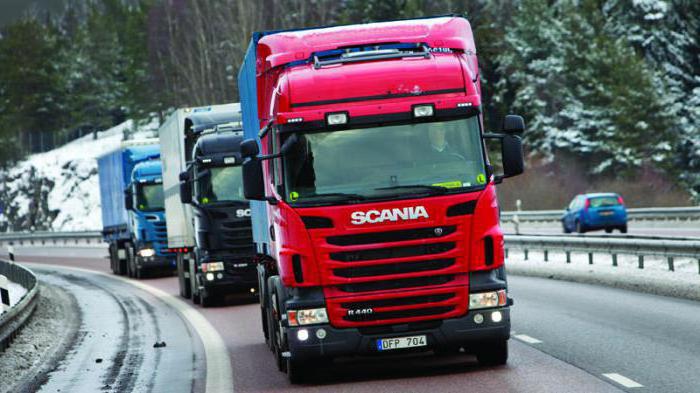When transporting goods abroad by customs, in addition to the general package of documents, the CMR consignment note is also required, which contains all the basic data from other securities: information from invoices, packing lists, various certificates and certificates, etc. This paper is the most significant, it confirms the agreement between the sender, the recipient and the forwarder. To avoid legal problems it is extremely important to be able to fill it out correctly.
general information
CMR consignment note - what is it and how is it decoded, what information does it include, how is it drawn up and why is it needed?

The abbreviation CMR itself is taken from the name of the convention in French. In Russia, it is translated as CMR - a convention on an agreement on international road transportation of goods. The convention was held in the city of Geneva in 1956, the agreements themselves acquired significance in 1958.
The bill of lading (TTN) serves as an evidence document confirming the conclusion of an agreement for the carriage of goods by road. The invoice form has a single unified form, it is drawn up when moving values using transport.
The use of this document has several purposes, indicating the supplier’s rights to sell the goods, the buyer’s rights - to register them as property and replacing the contract for the provision of cargo transportation services or as an addition to this agreement. CMR consignment note is relevant only for the transportation of goods abroad. It is necessary to issue it strictly according to legal rules.
CMR Waybill Features
The value of construction and installation work is difficult to overestimate. The information that can be obtained from the CMP document is:
- The number of items.
- Transportation route.
- Who transported the products.
- Information about the accompanying documentation.
- Name of addressee and sender.
- The period of the transportation.
- Customs information.
- Product condition.
- Date of loading and unloading.
TTN CMR - what is it? Blank СМР contains information from all accompanying documents. It is imperative that all these data overlap with each other and that all information matches. The presence of different information in the DEM and other papers (for example, a packing list or invoice) is fraught with a lot of complications.

The carrier may be most affected. To avoid subsequent problems, the freight forwarder must carefully and carefully examine and verify all forms of documents.
If the consignment note does not indicate the goods, the goods shall be considered smuggled.
In the construction and installation work, two groups of information must be prescribed:
- Basic information containing the basic data necessary for the subsequent transportation of goods.
- Seals, signatures, marks, comments on the transportation process are another rather significant category.
Each CMR consignment note must have a specific number.
Terms of Use for CMP Form
In order for the Convention to be applied in the transportation agreement, the agreement must meet certain conditions:
- transportation is paid;
- transporting goods from one state to another;
- road transport is used for transportation;
- one of the countries signed the СМР Convention.
Only in this case will the CMR consignment note be used to transport goods.
Who needs CMR instances?
The CMR form itself is written on several pages.Each of his columns is duplicated twice: in Russian and a foreign language. If there are several consignees, a separate CMR sample is required for each of them. Consequently, at least one CMR document is required for each vehicle.

The CMR waybill must be executed in several copies in order to avoid problems during transportation.
- The first instance remains with the sender.
- Another copy is transferred to the buyer of the goods.
- The cargo carrier itself also needs forms, for it it is necessary to issue two copies. The first of them is an addition to the waybill. The second document confirms the delivery of the delivery service itself, which is extremely important for subsequent payment and settlement.
- Customs authorities require a minimum of three copies.
The documents must bear the signatures and seals of the sender and the carrier. When accepting goods, the carrier must, in the established manner, inspect the number of units of products, their condition, labeling and type of packaging, and mark the conformity / non-compliance of the goods with the specified requirements.
Order of registration
Documents must be completed by the shipper. If the form is not drawn up correctly, all the consequences will fall on his shoulders, the carrier is not responsible for these errors.

For the prompt filling of the document, it is important to follow a certain procedure for filling the TTN CPM - this is the following sequence of actions:
- The sender must pay attention to subparagraphs 1-15, 21-22.
- The carrier draws up columns 16-19, 23, 25-29.
- The consignee signs and puts a stamp in column 24.
Let's consider these subsections in more detail. The procedure for filling them out is indicated in the Letter of the Russian Federation of 2012 “On sending information”.
A guide to the CMR form and its correct filling out is provided below.
Sender clearance
The first paragraph indicates all information about the sender, including:
- Title.
- Address and country.
- Contact telephone number of the person responsible for transporting.
- Initials of the responsible person.
The second column should contain information about the recipient, namely:
- Name of company.
- Country and address.
- Name and contact number of the liaison person.
The third subparagraph indicates which country and where exactly the goods are sent.
The fourth column prescribes the date and time of loading the goods, as well as the point of departure.
In the fifth column, you must specify the data on the supporting documentation by listing all the attached papers. What exactly should be attributed to construction and installation work? This can be, for example, documents such as certificates, packing list, invoice, certificates, TIR (which is sometimes supplemented by a cargo manifest with a more detailed description of units of production), etc.
The sixth paragraph indicates the degree of danger of the cargo carried.
The seventh subsection records the number of seats for each product with an indication of the total.
The eighth paragraph describes the type of packaging.
In column 9 the name of the transported goods is written.
In clause 10, the product code is taken from the HS.
In column 11 the gross mass of each product (weight with packaging) and their total mass are written.
Columns 7 - 11 represent a single unit, the rule works for any of them: each item in each subparagraph must be specified separately, since it is problematic to get this information from other documents. Therefore, it is important to fill in these sections correctly.
The volume of all production in cubic meters is recorded in the twelfth paragraph.
The thirteenth column contains all the information about the customs authority that will conduct the inspection. This data is not indicated in other documents. Therefore, it is desirable that the forwarder and the customer discuss the customs address in advance and record this in the CPM document.If an error occurs in indicating the destination, the forwarding procedure will be very exhausting and quite complicated, up to the point that you will have to rewrite the TIR Carnet.
If necessary, information on the cost of production in the currency of the invoice can also be entered in this paragraph.
In the fourteenth paragraph, the trailer number is written.
All information about the payment for the goods should be recorded in the fifteenth column.
In the twenty-first section, the settlement is indicated - the place where the CMR form is issued.
Arrivals for loading and departures may be stamped in the twenty-second column. According to Article 5 of the CMR, if the sender does not have a seal, then you can put only a signature, formally this will not be considered a violation.
Forwarder Filling
The carrier also draws up a CMR (international freight bill of lading), a sample of which, already partially completed, is provided to him by the sender.

In the sixteenth column, all information is indicated by the carrier, sometimes for this it is enough to put a stamp.
The seventeenth paragraph indicates the remaining carriers, if there are several.
The eighteenth column prescribes the forwarder's comments on the relative condition of the goods being transported: lack of packaging, deterioration of the goods, presence of a seal, non-compliance of containers with requirements, etc.
The nineteenth section is made out only after delivery has been made.
The twenty-third column contains all the data about the drivers, waybills and stamp with the signature of the forwarder.
Twenty-fifth and twenty-sixth subparagraphs describe the make, model and license plate number of automobile transport (in particular, trailer and tractor).
Marks of the consignee
The twenty-fourth column shall indicate information on arrival and departure for unloading. Additionally, the consignee puts his signature and stamp. In the CMP form, the values of the remaining columns are filled in by the forwarder after delivery of the goods to the necessary place.
Seals SMR
The sender's stamp is indicated in column 22, it is put by the company prescribed in the first subparagraph.
The stamp of the forwarder is placed in 23 and 16 subparagraphs. In the event of a change of carrier, the new forwarder shall stamp in 17 subparagraph.
The buyer marks receipt of the goods with a stamp in column 24.
At customs, the number of the transit declaration must be confirmed by the personal number seal of the customs officer. Also, a stamp of customs control of delivery is put in the SMR. Each new customs post puts its mark. The presence of the seals “Goods Received” and “Export Allowed” is also necessary.
Construction Insurance
CMR insurance - what is it?
Any forwarder can carry out insurance of his civil liability during the carriage of goods. Thus, he is able to protect himself in case of damage to goods during transportation.

If you carefully read international conventions, you will notice information according to which the carrier should compensate the damage. The forwarder is liable in case of loss or damage to the cargo, failure to meet the delivery time and other costs.
The presence of an insurance policy allows you to shift all responsibility to the insurance company.
Insurance benefits
The benefits of insurance include:
- Guarantee of insurance compensation in case of oversight of the goods. This is especially true for freight forwarders, whose property costs several times less than the transported goods.
- For the sender of the cargo, the presence of an insurance policy with the carrier becomes a testament to the honesty and legal capacity of the forwarder.
Cons of insurance policy
In addition to the benefits, the presence of insurance is accompanied by certain disadvantages. These include the following disadvantages of construction and installation insurance - this The facts below:
- If damage to the cargo was caused by an unauthorized person, the insurance company may refuse to pay compensation.
- To receive damages, you need to spend a lot of time on the preparation of the required package of documents.
- Sometimes the carrier’s liability may be limited by the specifics of legislative acts and certain limits.
Conclusion
TTN СМР is an important document used when crossing the international border with the help of a motor vehicle. Its form is unified and unified and approved in many countries. When crediting product taxes, the CMP form is used first.

When filling out this document, care must be taken and accuracy. It is imperative that the information from all documents is the same. Having design errors can lead to many problems.